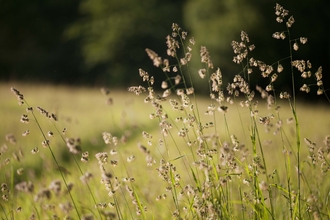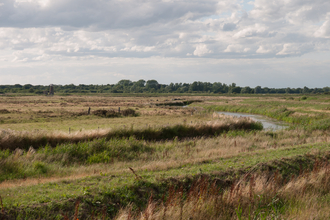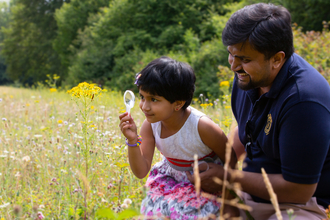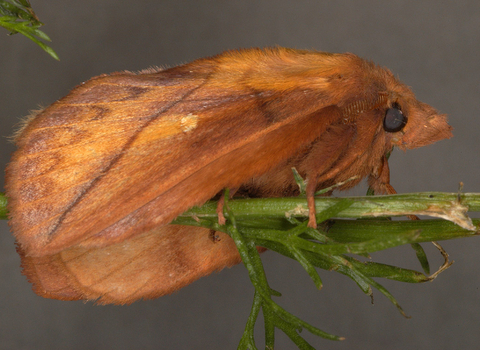
The drinker ©Dr Malcolm Storey
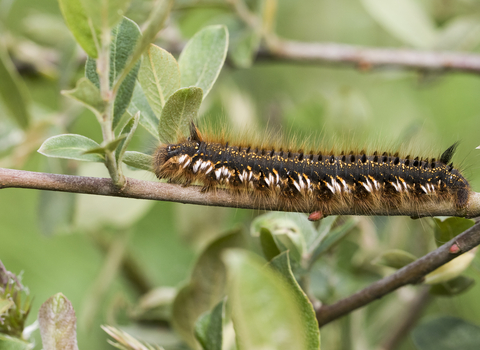
Drinker moth caterpillar ©Chris Lawrence
The drinker
This large, fluffy-looking moth is on the wing in July and August, but you might spot a caterpillar at almost any time of year.
Scientific name
Euthrix potatoriaWhen to see
Adults fly in July and August. Caterpillars from August to June.Species information
Category
Statistics
Adult wingspan: 41-70 mmCaterpillar length: up to 7 cm
Conservation status
Common
About
Unless you use a moth trap, you're more likely to encounter the hairy, gold speckled caterpillar of this large brownish moth. They're most often found in marshy places, where the caterpillars feed on a variety of grasses and reeds, like cock's-foot and reed canary-grass.Adults fly in July and August, when they can be attracted to lights. The females lay eggs in small clusters on reed and grass stems, which hatch in just over a week. They spend the winter as a small caterpillar, tucked away in sheltered spots low down in the vegetation.
Caterpillars emerge again in spring to fatten up, when they're often seen basking on low vegetation. When they're large enough, they pupate inside a papery cocoon formed on a grass or reed stem.
How to identify
Adults are large, broad-winged moths with very fluffy-looking bodies and a prominent 'snout'. Males are usually a warm orange-brown, with feathered antennae. Females tend to be yellower, with thin antennae. They can be distinguished from similar eggar moths by the diagonal line on the forewing, usually with two white spots beneath it.Caterpillars are large, dark and covered with brown hairs and golden speckles. A row of white hairs runs down each side of the body.
Distribution
Found throughout the UK, mainly in damp habitats such as boggy meadows, fens and marshes. They can sometimes be found in drier places, including gardens.Did you know?
This moth is called the drinker because of the caterpillar's habit of drinking drops of dew from grass stems.How people can help
The Wildlife Trusts manage many nature reserves for the benefit of the wildlife they support. You can help by supporting your local Trust and becoming a member; you'll find out about exciting wildlife news, events on your doorstep and volunteering opportunities, and will be helping local wildlife along the way.Watch
Drinker moth caterpillar (https://vimeo.com/348568549)
Drinker moth caterpillar ©Tom Hibbert

